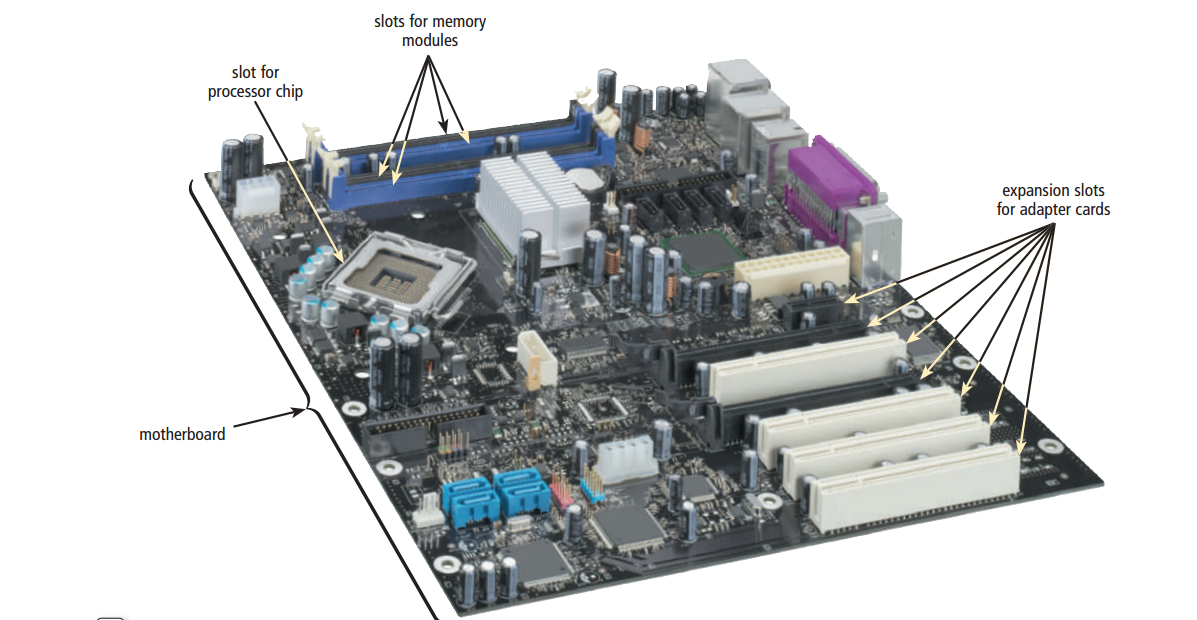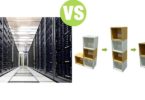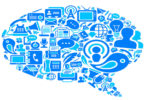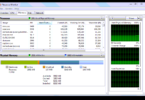Motherboard vs Hard Drive
Summary: Difference Between Motherboard and Hard Drive is that Motherboard, sometimes called a system board, is the main circuit board of the system unit. While hard disk drive is a storage device that contains one or more inflexible, circular platters that use magnetic particles to store data, instructions, and information.

Motherboard
Motherboard, sometimes called a system board, is the main circuit board of the system unit. Many electronic components attach to the motherboard; others are built into it. Above image shows a current desktop personal computer motherboard and identifies its slots for adapter cards, the processor chip, and memory. Memory chips are installed on memory cards (modules) that fit in a slot on the motherboard. A computer chip is a small piece of semiconducting material, usually silicon, on which integrated circuits are etched. An integrated circuit contains many microscopic pathways capable of carrying electrical current. Each integrated circuit can contain millions of elements such as resistors, capacitors, and transistors. Specific types of processor, memory, and other chips.
Hard Drive
A hard disk is a storage device that contains one or more inflexible, circular platters that use magnetic particles to store data, instructions, and information. The system unit on most desktop and notebook computers contains at least one hard disk. The entire device is enclosed in an airtight, sealed case to protect it from contamination. A hard disk that is mounted inside the system unit sometimes is called a fixed disk because it is not portable. With respect to a storage medium, the term portable means you can remove the medium from one computer and carry it to another computer.
Current personal computer hard disks have storage capacities from 160 GB to 2 TB and more. Home users store documents, spreadsheets, presentations, databases, e-mail messages, Web pages, digital photos, music, videos, and software on hard disks. Businesses use hard disks to store correspondence, reports, financial records, e-mail messages, customer orders and invoices, payroll records, inventory records, presentations, contracts, marketing literature, schedules, and Web sites.
Traditionally, hard disks stored data using longitudinal recording, which aligned the magnetic particles horizontally around the surface of the disk. With perpendicular recording, by contrast, hard disks align the magnetic particles vertically, or perpendicular to the disk’s surface, making much greater storage capacities possible. Experts estimate that hard disks using perpendicular recording provide storage capacities about 10 times greater than disks that use longitudinal recording. Hard disks are read/write storage media. That is, you can read from and write on a hard disk any number of times.
Also Read:
Difference Between Internal and External Drive Bays
Difference Between Flash Memory and Hard Drive
Difference Between Ram and Hard Drive







Leave a Comment
You must be logged in to post a comment.